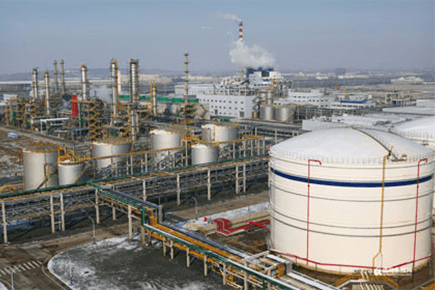SP Seplife® FF Agarose Chromatography Resin

Agarose chromatography Resin
SP seplife FF
SP Seplife® FF Agarose Chromatography Resin Product profile:
SP seplife® FF chromatography resin is a new highly cross-linked agarose chromatography resin independently developed by Sunresin. It is a kind of sulfonic acid-based propyl bonded on agarose gel filtration chromatography resin. Strong cation exchange chromatography resin with high flow rate, low back pressure, high dynamic loading, good chemical stability and mechanical properties, low non-specific adsorption, high recovery rate, convenient scale-up, shortening production time and improving Productivity. It is widely used in ion exchange separation of proteins, nucleic acids and peptides downstream of biopharmaceuticals and bioengineering.
SP Seplife® FF Agarose Chromatography Resin Parameters:
| Resin code | SP Seplife® FF |
| Appearance | White Sphere beads |
| Particle size(μm) | 45~165 |
| Matrix | Seplife 6FF |
| Flow rate(cm/h) | <750 |
| Pressure(MPa) | 0.3 |
| Heat resistance | 121℃, in water for 30mins |
| pH stability | 4~13 (long term), 3~14 (Short term, CIP) |
| Application |
Proteins, nucleic acids and peptides downstream of biopharmaceuticals and bioengineering |
| Chemical stability |
Stable in the following liquids: all common aqueous buffers; 1 mol/L sodium hydroxide; 8 mol/L urea; 8 mol/L guanidine hydrochloride; 70% ethanol |
| Adsorption (mg / ml) | >55mg/ml lysozyme/ml |
| Ion exchange capacity | 0.18~0.25mmol /ml |
| Working temp. | 4~40℃ |
|
Test conditions: Chromatography column 16mm * 300mm; Column bed height 15 cm; temperature 25℃; mobile phase was 0.1 mol / L NaCl. |
|
SP Seplife® FF Agarose Chromatography Resin Test Instruction:
1.Column packing
Packing is performed in accordance with standard operating procedures. It must be ensured that each material is at operating temperature and that the gel needs to be degassed before it is packed.
2.Equilibrium
Equilibrate the column with 2 to 5 column volumes of the loading balance, making sure that the conductivity and pH of the effluent are exactly the same as the conductivity and pH of the loading buffer.
The balance solution is a low concentration buffer solution such as NaOAC, PBS, and the like. A commonly used balance solution is 0.1 mol/L acetate buffer, pH 5.0.
3.Sample Loading
(1)The sample is prepared with a balance solution, and the turbid sample is centrifuged and filtered for loading. Samples with too much salt concentration are processed and then dispensed.
(2)In general, the target product is combined on a column, the impurities are washed away with an equilibrium solution, and an eluent is selected to wash the target product.
(3)The extent to which the medium adsorbs the sample components depends on the charged nature of the sample, the ionic strength of the mobile phase, and the pH. The salt concentration is small, and the medium adsorbs to the sample components more firmly. When using SP chromatography media, the recommended pH is 1 unit above the isoelectric point of the target product.
4.Elution
Elution can be carried out by increasing the salt concentration or increasing the pH, and generally increasing the salt concentration. A commonly used eluent (solution B) such as: 0.1 mol/L acetate buffer + 2 mol/L NaCl, pH 5.0.
5.Regeneration
Generally, the buffer is washed with a high salt concentration (containing 1~2mol/L NaCl) or the pH is reduced by 10 times or more, and then washed with an equilibrium solution of the bound protein to balance.
If inactivated proteins or lipids are not washed off during regeneration, they can be removed by in-place cleaning (CIP).
6.CIP
(1)For proteins bound by ionic bonding, it can be removed with 0.5 to 1 column bed volume of 2 M NaCl.
(2) For precipitated proteins, hydrophobically bound proteins or lipids, it can be washed first with 1 column bed volume of 0.1 M NaOH, and then with an equilibrium buffer solution until the pH is neutral.
(3) For strongly hydrophobically bound proteins, lipids, etc., wash with 4 to 10 times the bed volume of 70% ethanol or 30% isopropanol. Note that the concentration of the organic solvent gradually increases in a gradient manner, otherwise it is easy Create bubbles.
7.Storage
Sealed and stored at 4~30℃(preservation solution is 20% ethanol + 0.2mol/L sodium acetate), dry, ventilated, clean place, can not be frozen;
Used column is stored at 4~8℃, 20% ethanol solution +0.2mol /L sodium acetate.
SP Seplife® FF Agarose Chromatography Resin Caution:
(1)Column selection: Theoretically, as long as the column is long enough, the ideal resolution can be obtained, but since the column flow rate is related to the pressure gradient, the column length increases to slow the flow rate, the peak becomes wider, and the resolution Decrease; the diameter of the column increases, causing an increase in the non-uniformity of the liquid flow and a significant decrease in resolution.
(2)The pH and ionic strength of the elution buffer must be strictly controlled during the purification process. Column chromatography should be performed after the sample and the SP chromatography medium must be thoroughly equilibrated with the elution buffer.
(3)The column bed must be flat, without grooves and air bubbles, otherwise it should be repacked.
(4)The flow rate should be strictly controlled during the elution process, and not too fast.
(5)The volume of the sample should be small and the concentration should not be too high.
(6)During the loading and the entire elution process, the cylinder surface is prevented from drying out.













